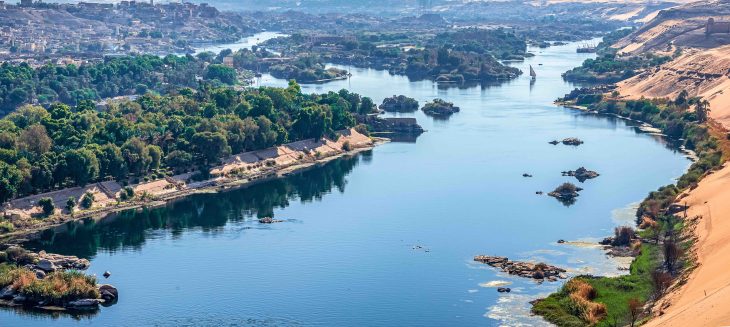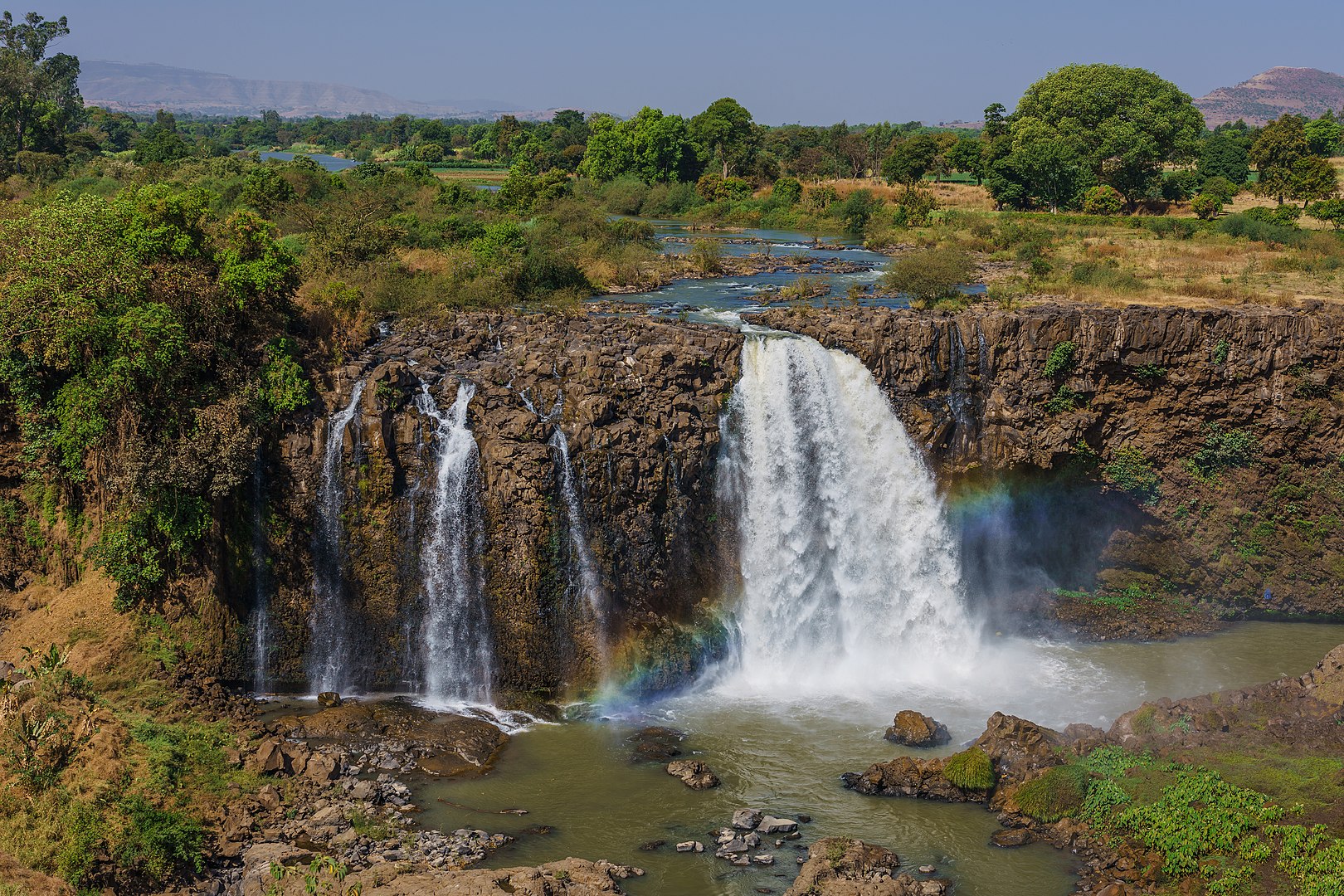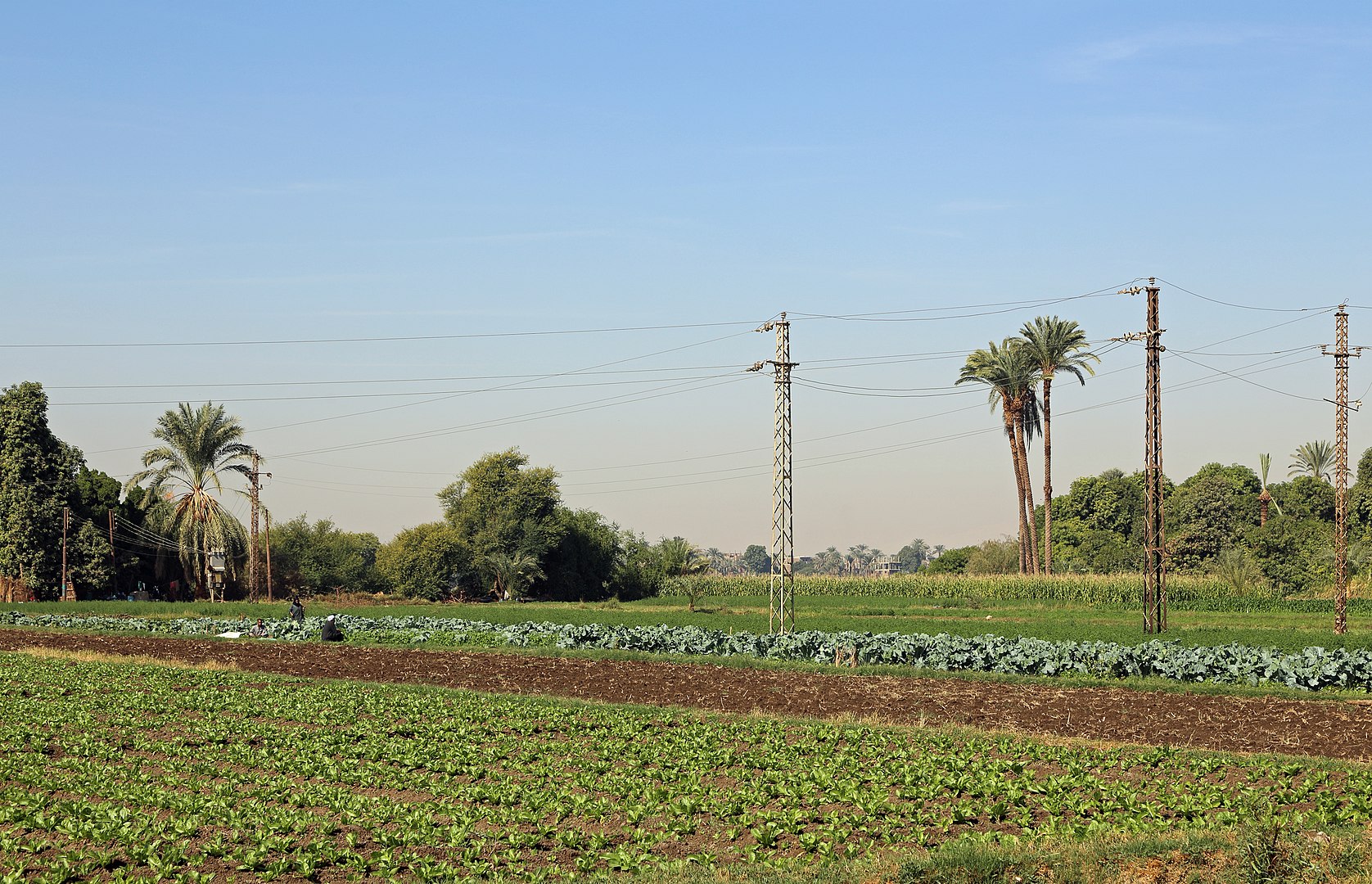
The Nile has left its mark on human history and continues to do so even in the present day. After all, millions depend on it to live. For a lot of people, the river provides essentials like food, freshwater, and transportation. There are also other interesting things about this majestic body of water. For instance, did you know that the Nile is the world’s longest river? And that it is 6,695 kilometers long?
If that piece of trivia tickled your brain, here is another info that you might know about the Nile. The river is commonly linked with Egypt, but it actually flows through 11 countries. They are Uganda, Congo, Tanzania, Rwanda, Burundi, Ethiopia, Eritrea, South Sudan, Kenya, Sudan, and Egypt. So, why do most people automatically connect it with Egypt? Perhaps it had to do with the story of the Hebrew prophet Moses in the Bible. When he was a baby, Moses’ mother hid him from the Egyptian Pharaoh. She put him in a basket and placed the basket along the banks of the Nile river.
There are more Nile River facts about where that came from! For instance, the river is also a popular tourist attraction. Tourists book cruise tours to experience the breathtaking view of the Nile firsthand. If you are thinking of going on a Nile cruise tour, you will go through many Egyptian landmarks. Some of these include the Philae temple built to honor the goddess Isis and the colorful Nubian village, near the city of Aswan.
Apart from being a tourist attraction, it is a vital source of life for numerous Egyptians in particular. In fact, more than 95 percent of the Egyptian population relies on the river’s water. They depend on it so much, most of the locals live within a few miles of its banks to get close to it.
Want to know more about one of the most famous rivers in the world? Get to know what many people consider to be the lifeline of Egypt — take a deep dive into our collection of 40 Nile River Facts. You won’t regret it!
- The Nile runs an estimated length of 6,650 km.
- The river’s basin covers a total area of an estimated 3.4 million km².
- At its widest, the river has a width of 2.8 km.
- On average, the river has a depth of 9.5 meters.
- At its deepest, the river has a depth of 11 meters.
- Before the last Ice Age, the Nile used to run west through what is now Libya and into the Gulf of Sidra.
- At the end of the last Ice Age, rising sea levels caused the Nile to change to its modern course.
- Scientists consider the change of the Nile’s course a major factor in the formation of the Sahara Desert.
- Human settlements in Ancient Egypt depended on the Nile for water as far back as the Stone Age.
- The Nile’s water allowed the Ancient Egyptians to grow large amounts of flax, papyrus, and wheat among other crops.
- Ancient Egypt’s dependence on the Nile led Herodotus to call the country the Gift of the Nile.
- Both the Greeks and the Romans launched many expeditions to find the source of the Nile.
- Papal emissaries traveling across Asia and Africa first learned about the Nile’s sources in the 1400s.
- Modern exploration of the Nile’s sources began in the 19th Century, after the Ottoman conquest of Sudan by Muhammad Ali.
- John Speke discovered Lake Victoria, the main source of the Nile, in 1858. The only outflow from Lake Victoria is the Nile River.
- Brazilians contest that the Amazon river is longer than the Nile river.
- Even today, Egypt and Sudan get most of their water from the Nile.
- Most of Egypt’s cities and major population centers lie in the Nile Valley north of Aswan.
- The Nile Delta measures 240 km across from Alexandria in the west, to Port Said in the east.
- It also covers the lowermost 160 km of the Nile before it empties into the Mediterranean Sea.
Nile River Facts Infographics

The origin of the English word Nile remains something of a mystery today.
Its root goes back to the Latin Nilus, as well as the Greek Νεῖλος. The Arabic words for the Nile, en-Nīl and an-Nīl also share the same roots. The mystery lies in the lack of connection with the Ancient Egyptians’ own word for the Nile.
They called it Hapy or Iteru, which later evolved into the Coptic Egyptian words piaro and phiaro. Today, historians and etymologists continue to study the mystery and find the link between the languages.
The White Nile makes up the Nile’s main tributary.
The White Nile starts at Lake Victoria, flowing north for 130 km to Lake Kyoga. From there it flows west to Masindi Port, then north before circling to the east, and then north again to the Karuma Falls. It then flows west through the Murchison Falls, and finally into Lake Albert before flowing north to South Sudan near Nimule, an overall distance of around 200 km. There, it meets with the Achwa River, and after flowing north into Sudan at Renk, meets with the Blue Nile at Khartoum.
The Red Nile makes up another one of the Nile’s tributaries.
It also goes by the name of the Atbara River and starts in northwestern Ethiopia. It then flows over 800 km north to Sudan, where it meets the Nile at Atbarah, which shares its name with the river. The river’s existence depends on the amount of rainfall in Ethiopia and dries up quickly in the absence of rainfall. In fact, the regional dry season from January to June usually sees the Red Nile drying up along its entire course north of Khartoum.
The Blue Nile makes up another one of the Nile’s tributaries.

Like the Red Nile, the Blue Nile starts in Ethiopia, from Lake Tana specifically. It then flows 1,400 km north to Sudan, where it meets the White Nile at Khartoum. After their waters flow into each other, the river simply goes by the name of the Nile. The Blue Nile also has the distinction of carrying 90% of the water that eventually ends up emptying into the Mediterranean Sea.
The Nile’s course passes through 11 different countries.
In East Africa alone, it passes through Burundi, Eritrea, Ethiopia, Kenya, Rwanda, South Sudan, Sudan, Tanzania, and Uganda. A portion of the river also passes the Congo in Central Africa. Finally, it empties into the Mediterranean Sea through Egypt, in North Africa. Talk about international Nile River Facts.
The Nile once had a much longer course.
The Nile is even longer during the Miocene Epoch, an era that is 23 and 5.3 million years ago. At the time, the Nile’s headwaters stretched as far south as Zambia. Lake Tanganyika also emptied into the Nile at the time, until a series of volcanic eruptions cut the river off from the lake.
The Aswan Dam greatly affects the amount of water in the Nile at any given time.
Built in the ’60s, the Aswan Dam essentially cut the river into two, damming the upper Nile into a large reservoir behind it. It changed the amount of water flowing below the dam, averaging at only 1,400 m³ per second. In contrast, the Nile carries more water as it flows into the dam’s reservoir, at 2,830 m³ per second.
The Aswan Dam changed the Nile’s annual floods.
The annual floods generally brought not just more water, but also nutrient-rich mud and silt from upriver. This made the soil very suitable for farming, ensuring large harvests. However, the annual floods also had an unpredictable element, sometimes having lower water than usual, or even the opposite, flooding to a greater degree, drowning fields and villages alike. The dam’s construction brought the flooding under control, ensuring a generally uniform amount of water every year while maintaining a stable water supply.
The end of the annual floods also changed the region’s agricultural sector.

Instead of floods bringing the water needed for farming, the Egyptians shifted to modern irrigation after the dam’s construction. This also allowed areas of the surrounding desert that the river never reached to become farmland. All in all, the Egyptians gained an estimated 8,400 km² of additional farmland both in the Nile Delta and Valley alike. Wheat production, in particular, tripled in the four decades between 1952 and 1991. It also allowed the Egyptians to diversify their agricultural sector, as they could now grow multiple crops per season.
The Aswan Dam produces around 15% of Egypt’s electricity.
Aswan Dam’s great contribution to the country’s electricity is unsurprising considering its 12 generators have a total output of 2.1 gigawatts. At the time of the dam’s construction, that amounted to half of Egypt’s electricity and gave the country’s rural areas electricity for the first time.
The Aswan Dam’s construction also had its disadvantages.
Large parts of the Nubian region downstream of the Nile ended up underwater in the Aswan Dam’s reservoir. This forced the resettlement of up to 120,000 Nubians across both Egypt and Sudan. Both the Egyptian and Sudanese governments built the Nubian refugees’ new homes and communities, including modern educational and medical facilities. They also included the refugees in agricultural programs, where the refugees could farm various crops such as cotton, sugarcane, and wheat among others.
In 2019, the Egyptian government also extended financial compensation to the refugees. Other negative effects of the Aswan Dam included various archaeological sites also going underwater. This led to massive efforts by both the Egyptian government and the international community to relocate the sites. In particular, they moved the Great Temple at Abu Simbel stone by stone to high ground to keep it from drowning under the Nile.
It has also unexpectedly reduced the drinking quality of the Nile’s water.
This resulted from how the Aswan Dam kept mud and silt from upriver from washing down past the dam. This, in turn, left the Nile much clearer, allowing sunlight to go deeper into the water.
At the same time, farmers downriver began using large amounts of synthetic fertilizer as part of modern agricultural methods. The combination of increased sunlight and fertilizer runoff caused algae to bloom in the Nile’s waters. This forced Egyptians to invest in large-scale water purification systems to compensate.
Scientists claim that critics exaggerate the loss of natural fertilization from the pre-dam floods.
Studies show that even before the dam’s construction, a full 88% of all mud and silt from upriver ended up in the Mediterranean without washing up on the Nile’s shores. It showed that the adoption of modern agricultural methods, such as the use of synthetic fertilizer and artificial irrigation methods vastly increased Egypt’s agricultural yields.
They also dismiss accusations that the dam destroyed the traditional mud-brick industry.
It’s been pointed out how modern methods such as the use of a combination of sand and clay have since become adopted in Egypt. This leads scientists to argue that even without the dam’s construction, the traditional mud-brick industry would have fallen regardless. The economics of modern methods would simply have driven them out of the market.
The Aswan Dam’s construction actually reduced the cases of schistosomiasis in Egypt.

A common accusation against the Aswan Dam involves an increase in cases of schistosomiasis after its construction. If anything, the adoption of modern irrigation after the dam’s construction caused a large drop in the number of schistosomiasis cases. The widespread introduction of modern medicine further prompted cases to drop.
Some critics today actually call for the Aswan Dam’s destruction.
A strange, but true example of Nile River Facts. They argue that it would actually cost less to tear the dam down than it would be dealing with possible future consequences of the dam’s existence. They also argue it would free up to 5,000 km² of fertile farmland from under the dam’s reservoir.
Other critics argue that the Aswan Dam’s construction had a negative effect on the Mediterranean fishing industry.
Critics argue that the sardine catches off the Egyptian coast dropped from 18,000 tons in 1962 to just 460 tons in 1968. Catches have since risen to 8,590 tons in 1998, but it still falls short of the pre-dam catches. Scientists, though, can still find no connection between the dam’s construction and the drop in sardine catches.
Ethiopia today also has plans to build its own dam on the Nile.
The Grand Ethiopian Renaissance Dam is a project meant for another dam on the Nile. Its construction is expected to resolve Ethiopia’s serious electrical shortages. The project began in 2011, and in 2020, the Ethiopians began filling the dam’s reservoir. Arguments, however, erupted between Egypt and Ethiopia over the dam’s existence and its effects on the region’s water supply. Talk about divisive examples of Nile River Facts.
The Nile had an important place in Ancient Egyptian religion.

One of their gods, Hapi, had an association with the Nile, and along with the Pharaoh, the Ancient Egyptians believed that he controlled the Nile’s flooding. They also believed that the Nile served as the line between life and death. Together with the way the Sun rose in the east and set in the west, the Ancient Egyptians associated the west bank of the Nile with the land of the dead. For that reason, they always built their tombs and buried their dead on the west bank of the Nile.
The Ancient Egyptians based their calendar on the Nile.
They divided their calendar into three cycles of four months each, with each month having 30 days. The first cycle had the name of Akhet, covering the part of the year when the Nile floods its banks. Peret followed Akhet when the crops grew on the enriched land left from the Nile’s floods. And finally, Shemu made up the year’s harvest season. How’s that for interesting Nile River Facts?
Was this page helpful?
Our commitment to delivering trustworthy and engaging content is at the heart of what we do. Each fact on our site is contributed by real users like you, bringing a wealth of diverse insights and information. To ensure the highest standards of accuracy and reliability, our dedicated editors meticulously review each submission. This process guarantees that the facts we share are not only fascinating but also credible. Trust in our commitment to quality and authenticity as you explore and learn with us.
